All About Pliers
There are 5 types of pliers commonly found around the house. Learn all about them and which ones you need in your DIY kit.
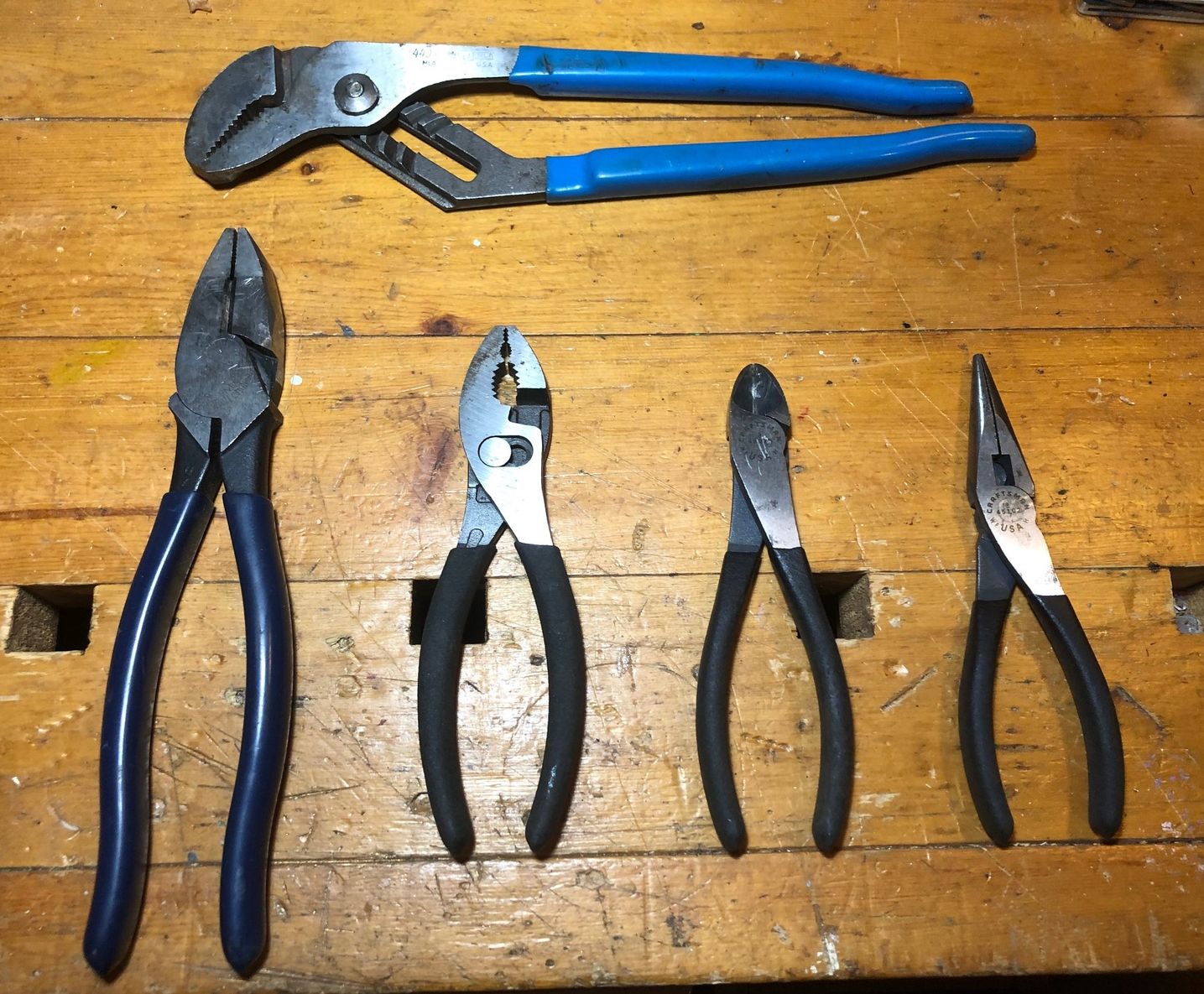
I find the various form factors and specialized uses for a particular tool family fascinating. Someone saw a task to be performed that current tools couldn't do well, easily or at all. So, what did they do? They invented the tool best suited to the task. Talk about the ultimate DIY! Before too much longer, we'll all be able to design and produce our own tools as 3D printers and hobbyist CNC machines find their way into homes everywhere. But that's a topic for another article.
Today's post covers pliers, which, like hammers, come in a variety that begs description. The five styles in common everyday use include:
- Diagonal cutters
- Slip joint
- Groove joint
- Needle nose
- Wire cutters or linesman
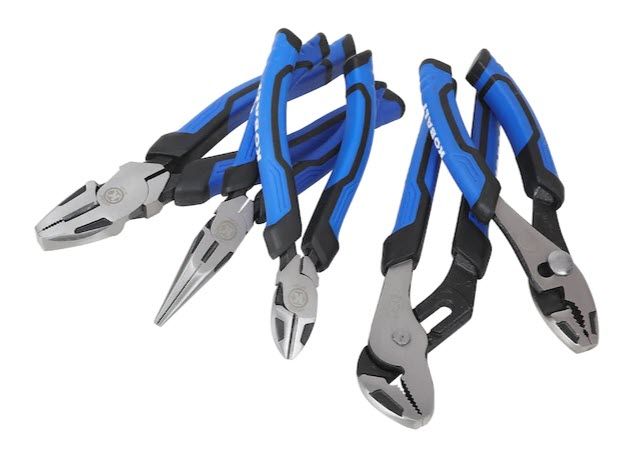
Kobalt pliers, left to right: linesman, needle nose, side/diagonal cutters, groove joint and slip joint.
Is it necessary to have all five types? No, your DIY toolkit only needs one type, but having a variety in your arsenal never hurts. I have all of the five plus more in my tool kit. However, I often use the needle nose, diagonal cutters and linesman in that order.
What company makes the best pliers?
For my money, you can't beat the quality of Craftsman, Channellock or Kobalt pliers. Countless others make serviceable tools, but you'll never go wrong with one of these three manufacturers. Here are things to look for in any set of pliers you buy:
- Drop forged
- Chrome nickel steel or equivalent
- Machined jaw surfaces
- Lifetime warranty
- Made in the USA
Tools made in the United States rival anything you'll get from Asia Pacific manufacturers and typically are superior in quality, fit and finish and reliable functioning. Sure the others are less expensive, but when it comes to tools, buy quality, and you'll only buy it once. Unless someone loses your tool or you loaned it out and never got it back. Remember the Rules of the Tools.
Needle nose pliers
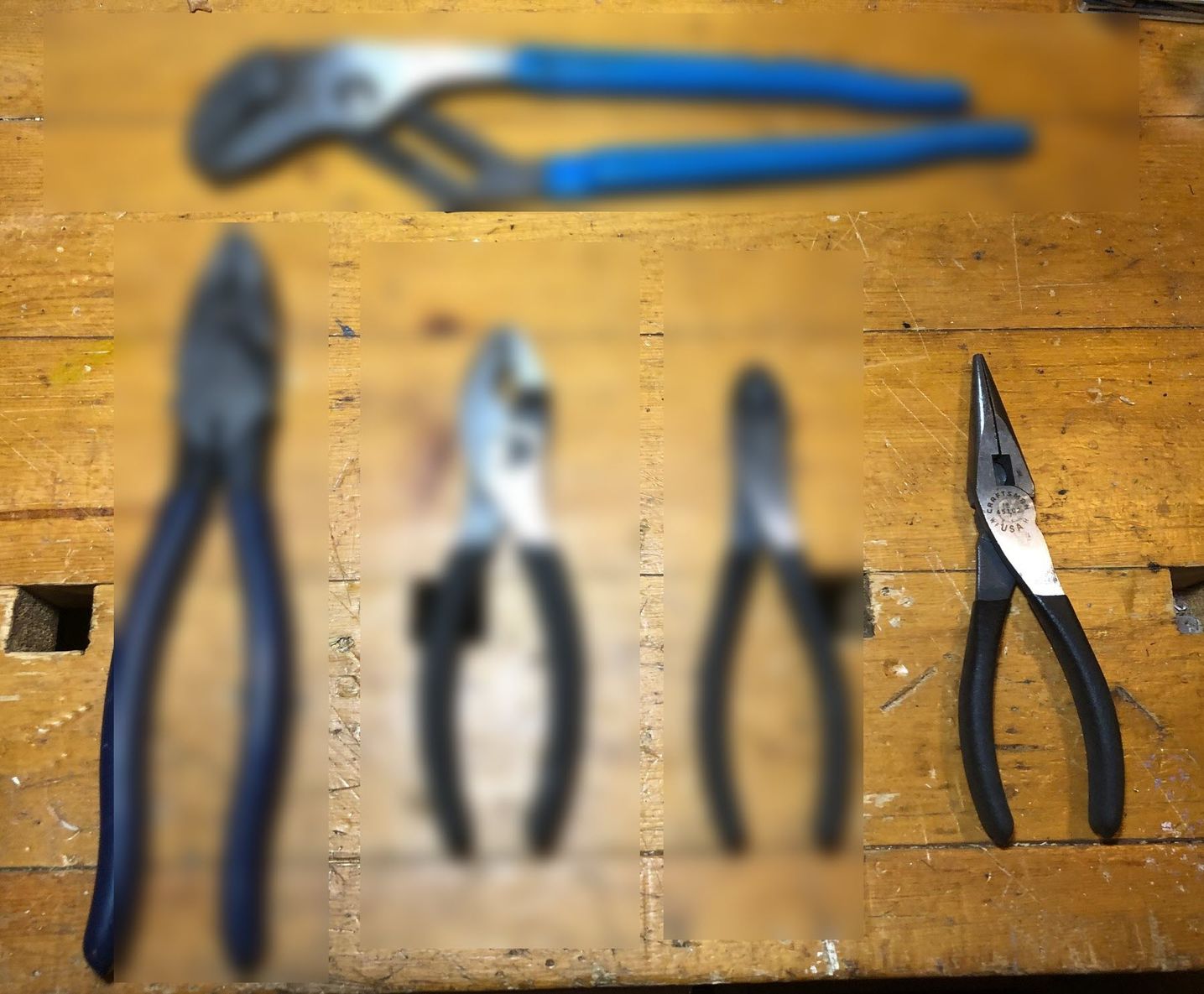
If you can only have one set of pliers, make your choice needle nose. Why this style? Because of its versatility. Most tasks requiring a set of pliers can be handled with the good old needle nose.
But first, for something entirely different, let's take a tangent into the etymology of pliers, the word.
According to Etymology Online, the word pliers has its roots in medieval France:
"small pincers with long jaws adapted for holding small articles," 1560s, plural agent noun from ply (v.2). French cognate plieur meant "folder."
There, that's better! So, back to needle nose pliers and why they are the type to have when you are only having one (I believe that is the punch line from a beer commercial).
Top three benefits of needle nose pliers
- The long nose lets you get into hard-to-reach spaces and grab something to hold it still, remove it or insert it for further work.
- The jaws open wide enough to grip most items encountered in typical DIY projects.
- The cutters let you cut the mild (soft) wire common around the homestead.
What are the other types used for?
There are four more types of pliers you should consider for your DIY kit when the spirit moves you. Let's take a quick look at them.
Diagonal cutters
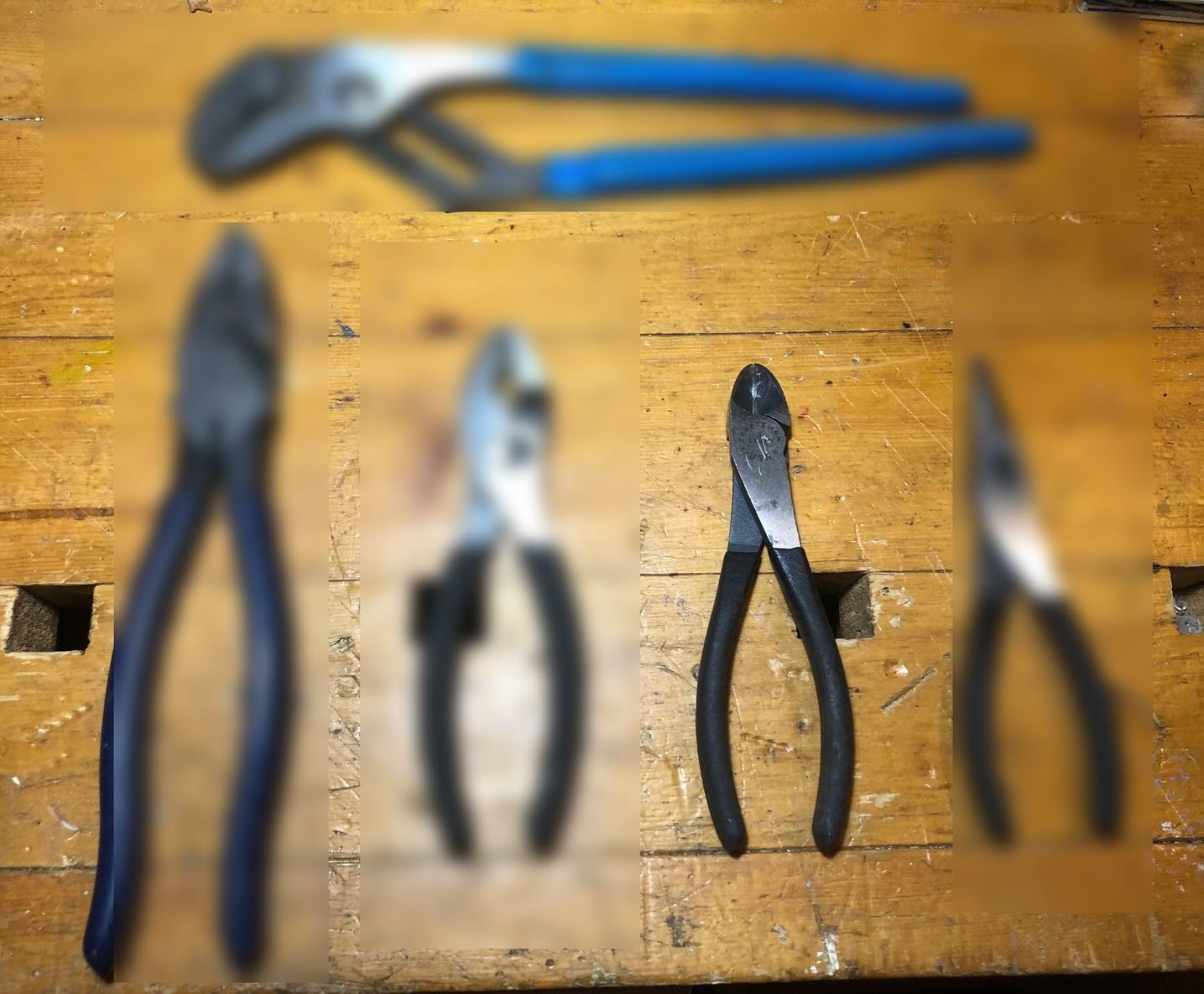
These pliers have a single purpose, cutting household wire up to 12 gauge and mild steel like small nails. You can cut larger gauge wires and harder steels, but it's tough.
Fortunately, you do not need these in your toolkit unless you want a complete set. Needle nose pliers almost always have integral cutters between jaws and joints. You'll rarely miss the diagonals until you need to cut at the tip of your pliers. For example, you have a nail sticking out in a spot inaccessible to the long nose cutters.
Slip joint pliers
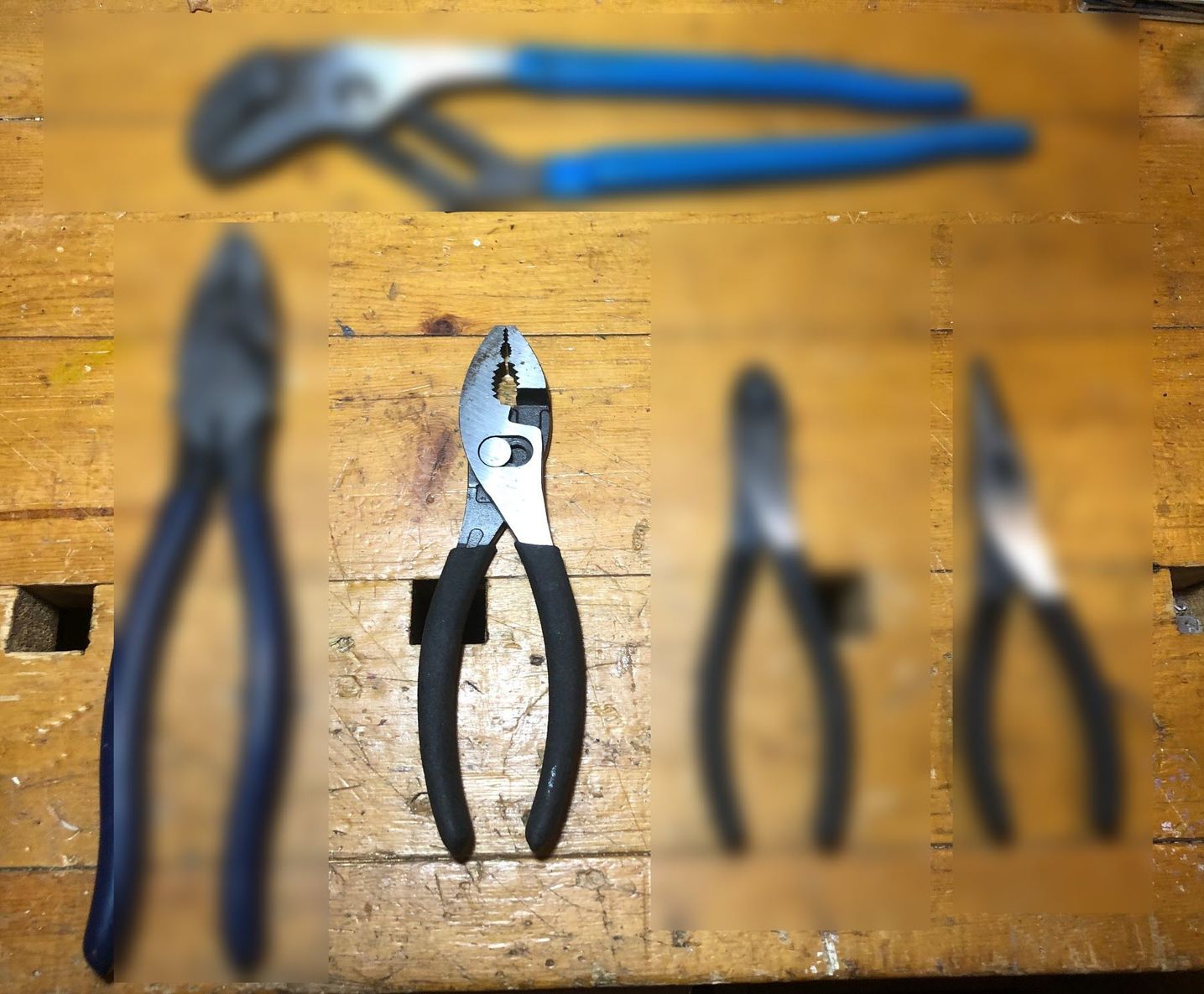
These pliers are another specialized tool. Notice the opening in the jaws? Well, that's for grabbing a pipe or nut and either holding it still or turning it. The slip joint lets you operate on larger items up to 3/4" in diameter or thereabouts. You'll need the Channel Lock or groove joint pliers for larger items.
They are also handy when twisting wire together, like when you're repairing the barbed wire fence on your ranch to keep your prize longhorns from roaming.
Note: This tool will damage whatever you use them on, so if you want a pristine looking nut or pipe, you'll need to use a different tool.
Groove joint pliers
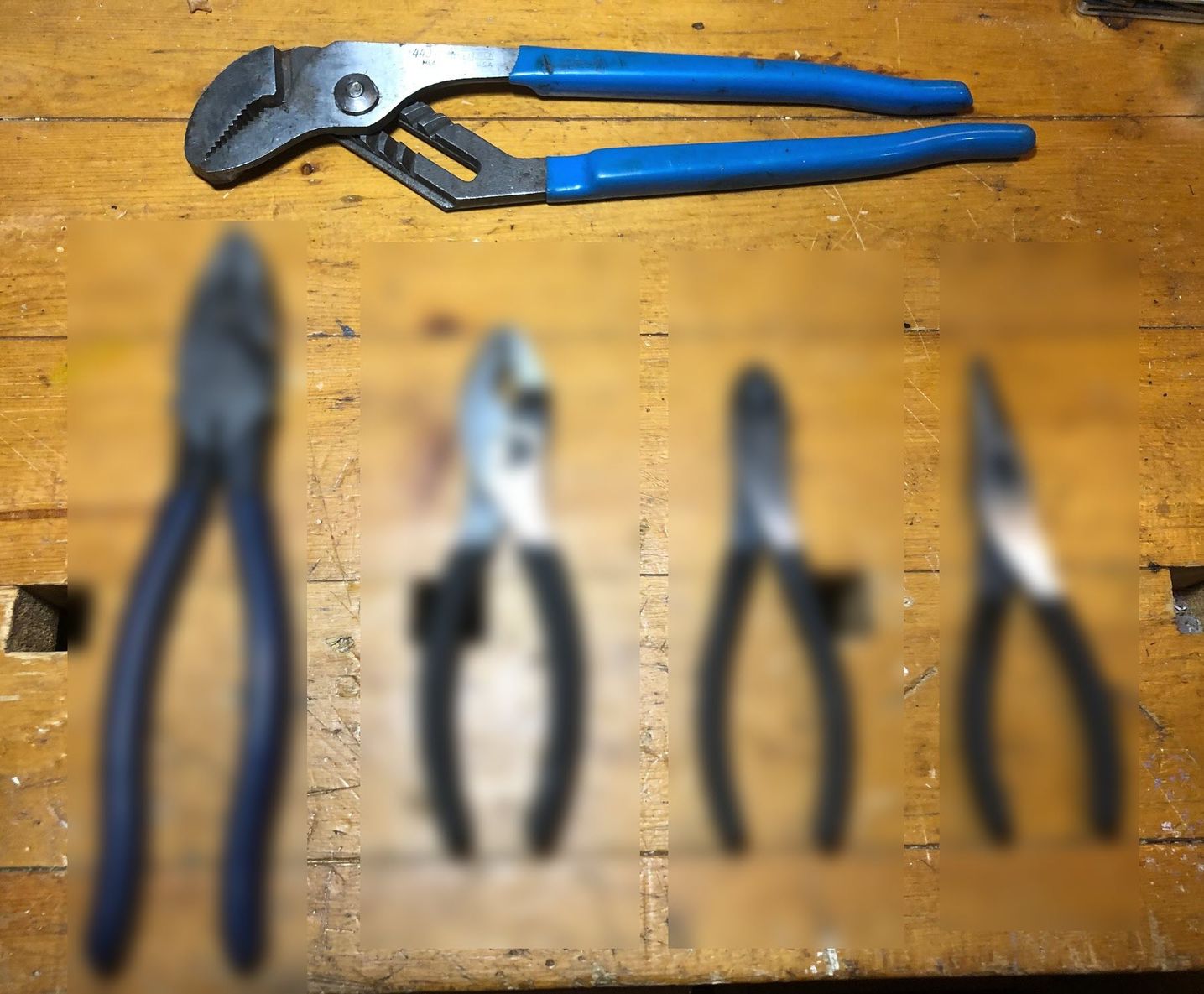
In my humble opinion, Channellock makes the best groove joint pliers. After all, the company invented the tool. These pliers have the same purpose as the slip joints, holding something tight or turning it. When your target exceeds an inch, time to reach for these handsome lads.
Depending upon the size of the pliers, you can easily handle pipes and nuts up to 3" or so. I like to use these on sink plumbing and vehicle exhaust systems. The same caution applies to groove joint pliers as to slip joints; they WILL chew up whatever you are working on, so be forewarned.
Linesman pliers
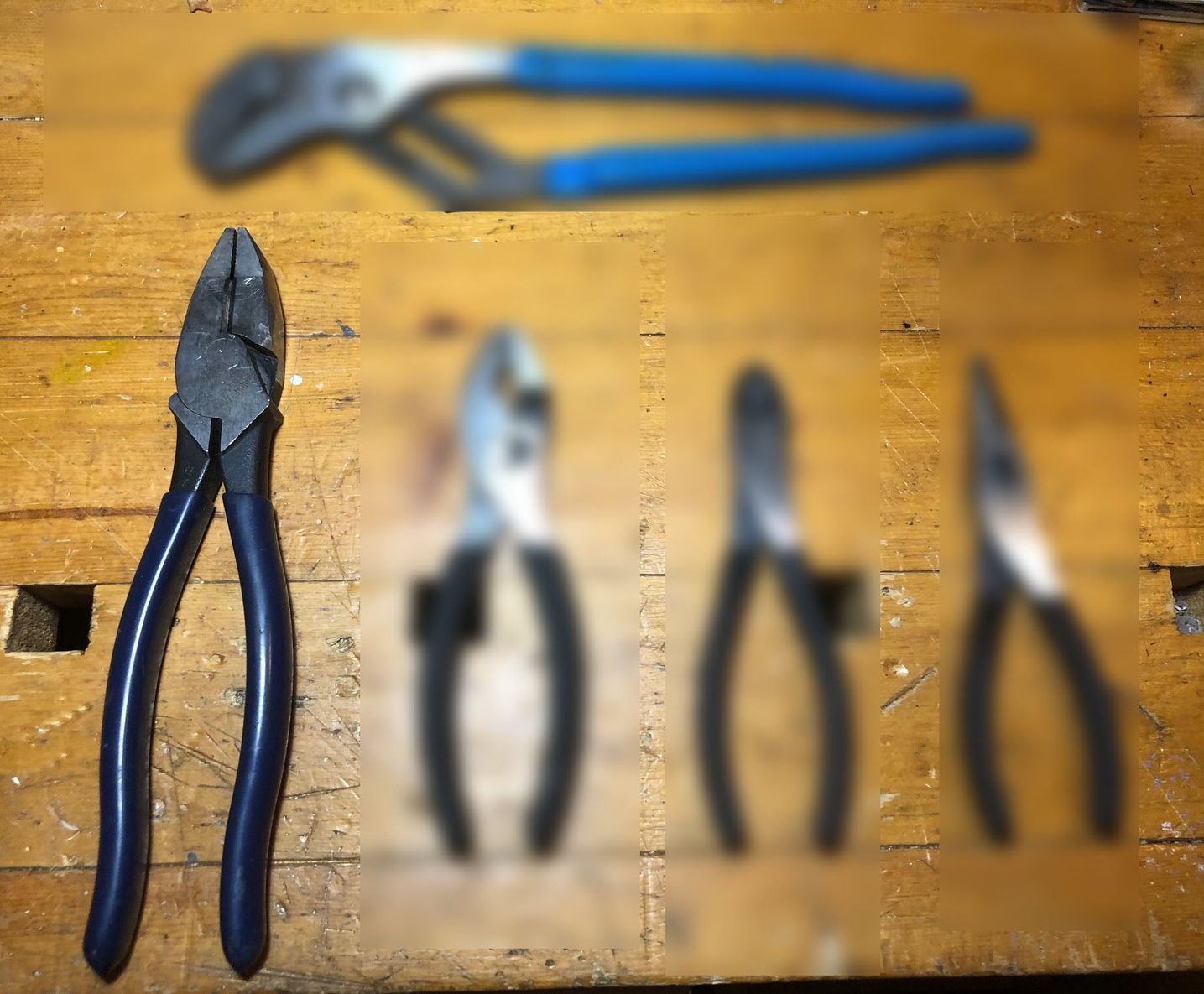
Linesman pliers get their name from the professionals who use them, linesmen. They are designed to cut and twist wire gauges and types commonly found in electric distribution systems (the poles and wires bringing those handy little electrons to your house). Think of them as a combination of the wire-twisting capability of the slip joint and the integrated cutter of needle nose pliers.
You'll notice the pair of pliers I picture are larger than all the pliers to its right. That's because I got my pliers while working for an electric cooperative. Smaller versions are available if you want to add these to your kit.
Note: I've not mentioned Klein Tools before because they are distributed to electric companies and supply houses like Grainger. They're outstanding products, so if you want to have a legit pair of linesman pliers, search out Klein Tools online.
Need to get a grip on your DIY projects? Reach for the pliers!
There are many additional specialized form factors and sizes of pliers available, most of which are one-trick ponies. A prime example is needle nose pliers with a 90-degree bend in their jaws! You rarely need them, but you'll be glad they're close at hand when you do,
Equip your kit with needle nose pliers and expand your collection as projects demand or budgets allow.
Dangers of improper plier use
~PSA for Simple-Fixes Readers~
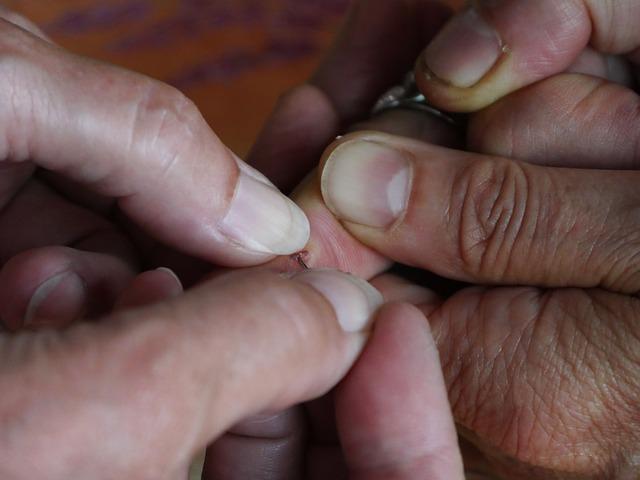
Always use the proper tool for the job at hand! Here are a few of the things you'll miss when you do:
- Pinched fingers
- Busted knuckles
- Cuts and scrapes
- Damaged surfaces
- Teaching young children new words
That's a wrap for pliers. Fill out your DIY kit with as many as you like because it's better to have and not need than to need and not have. This also applies to stocking your beer fridge properly.
